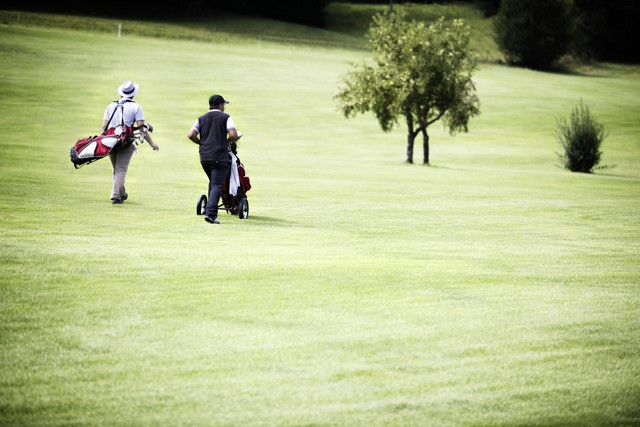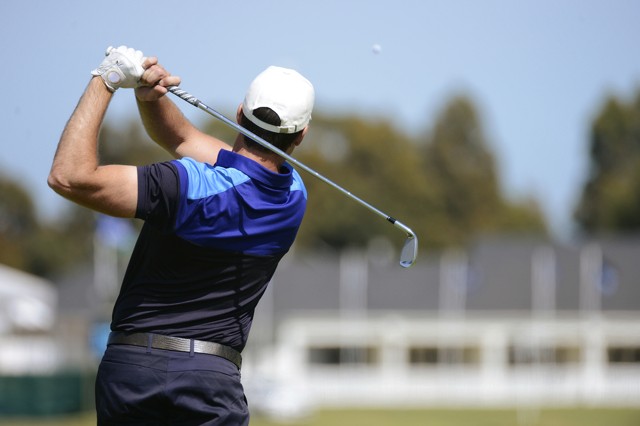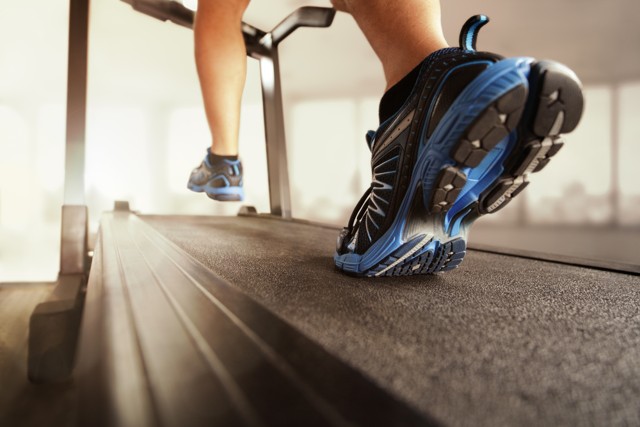The Golfers Guide to Health and Fitness
Is golf merely a game or an actual sport? Are golfers really athletes? We for one are tired of hearing the same questions surrounding a fitness debate that will seemingly never be settled – until now!
We have actual evidence which proves that golf provides real health benefits; the average person is said to burn 1400 calories walking 18 holes on a full-length course (according to a study by the Rose Centre for Health and Sports Science – Denver).
Cardiovascular fitness, strength, flexibility and endurance are all improved through mastering the art of the swing, and the best part is that golf is suitable for each and every level of personal fitness, making it a great sport for beginners and pros alike.
Here’s four main reasons why golf is more exercise than you think:
-
Walking

Photo credit: OtmarW/Shutterstock
We’ll start with an obvious one – walking an entire golf course is pretty damn good exercise for your heart and cardiovascular system – especially if you’re carrying clubs or pushing a cart! Most golf courses are spread over acres of hilly land, therefore if you opt to walk to each hole rather than ride in a cart, you’re likely to be getting your heart rate up considerably and burning some serious calories; burning 2500 or more calories a week is said to significantly lower your risk of heart disease, cancer and diabetes. Cardiovascular exercises like running, swimming or biking are said to be great stress relievers too, and golf offers the same benefits – who would've thought?!
-
Strength Training

Photo credit: Tony Bowler/Shutterstock
We’re not claiming golfing is comparable to a hard core strength training routine using barbells, body weight or kettle bells. However, even though swinging a golf club itself doesn’t take a lot of strength, walking up and down the hills actually kicks your hamstrings and quads into gear. Your lower body therefore gets a great strength workout throughout the game – perfect for someone who wants to strength train at a less intense level, or someone with injuries who can’t use weights.
Moreover, lifting and carrying your golf bag for long distances is a great strength and endurance workout for the upper body! Do that every single week and you’ve pretty much covered all the muscles in your upper body – result!
-
Balance and Flexibility

Photo credit: antoniodiaz/Shutterstock
More often than not, people forget that working on increasing strength and cardiovascular endurance aren’t the only two ways to improve your fitness and health. The ability to balance your body and move it freely is a very important part of working out.
Not only will it help you to become better at whichever sports you participate in, it will also give you a good strong core which in turn helps to prevent injury to your back and neck.
Your core muscles include your abdominals, lower back muscles and even your buttocks; increasing your core strength means you will have better posture and be able to hold yourself in order to prevent back pain, neck aches and dangerous falls. Everyone should make an effort to improve their balance as far as possible – especially people who regularly participate in sport!
-
Concentration
As aforementioned, there is no doubt that golf is a great way to work out your body, however exercise for the mind should never be forgotten! Exercising your brain is important for leading as long a life as possible; neglecting to do so can lead to brain degradation and loss of memory etc.
Playing golf consists of a lot of brain activity – you are forced to remember numbers, scores, tips and techniques which is all in all a great mind flexing workout!
Train like a pro!
Professional golfers have to train in specific ways in order to ensure their bodies are in the best possible condition for match play - watch Rory McIlroy in action!
-
Functional training
This type of training involves using and building certain muscles that are used most in a game of golf. A golfer uses legs in order to maintain stability when hitting the ball, then uses arms when actually hitting the ball which means a powerful swing is needed (and therefore powerful arms and upper body strength!). A great functional training move for golfers would be using a kettle bell to do rotational lunges; lunge on alternate legs whilst holding the kettle bell and moving your body to the opposite side.
A strong core is also important for a golfer’s balance when going to hit the ball, therefore core exercises such as the kneeling cable chop, planks (both normal and side variations) and stability ball rollouts.
-
Cardio Training

Photo credit: Brian A Jackson/Shutterstock
Since a golf game lasts for long periods of time (1.5-2 hours on average for a full course) golfers need to have good endurance and stamina – therefore cardiovascular training is necessary as part of any professional golfers training. Not having the endurance in order to carry you through an entire game can affect swing, accuracy, competitiveness and overall performance.
Good examples of cardio training for golfers include swimming, jogging and cycling – these should be undertaken around 3 times a week.
-
Weight training

Photo credit: Flamingo Images/Shutterstock
For the best golf swing possible, golfers need to possess both strength and power; the most efficient way to achieve this level of fitness is to undergo some form of weight training, be that body weight training or the use of free weights. Golf courses consist of lots of different terrain including small water bodies and ditches etc., so in order to hit every hole a golfer needs to have enough power and strength to hit the ball past these obstacles.
Weight training for golfers need not be intense, but should be varied – the best programme would include medium weights at a medium intensity for more reps – four sets of 20 reps is ideal. Exercise ideas for the upper body include bench press, press-ups, triceps dips, shoulder press and bicep curls.
To work out their lower body, golfers should utilise the humble squat and basic deadlift – again using a medium barbell weight for four sets of 25 would be a great workout for a golfer’s quads and hamstrings.
-
Flexibility Training
In order to take full advantage of your power and endurance when taking a shot, it is necessary to have a high level of flexibility. A good golfer should not be stiff, which is why professional golfers aim to improve their flexibility with a routine of simple stretching exercises repeated daily to help the muscles retain elasticity and suppleness permanently.
Stretching followed by swinging the golf club repeatedly will contribute to a smoother swing – it reduces the chances of injury by pulling or straining a muscle, too! Finally, foam rolling is a technique used by many pro golfers to prepare themselves for big tournaments. All athletes develop stiffness in fascia (connective tissue that lies between the muscles and the skin). The restrictions usually develop through injury, inflammation or simply pushing your body to its limits and if they aren’t dealt with they can lead to a loss of mobility – bad news for a golfer whose entire game relies on his swing! Using a foam roller to relax the fascia and provide relief will ensure a golfer retains a full range of motion.








